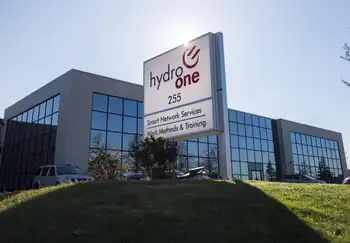Burlington Electric marks 100 years
BURLINGTON, VERMONT - Charlie Willette was hired at the Burlington Electric Department in 1971, but the Willette family history with the utility began long before that. Willette's grandfather, Charles Willette, started as a line worker in the 1920s; and his father, also named Charles, was employed as a line worker in the 1940s and 1950s.
For the Willettes, the Burlington Electric Department has brought both tragedy - Willette's grandfather was electrocuted on a pole in 1932 - and opportunity.
"They put me through college, and I've gone from an apprentice line worker all the way up to the manager of operations," Willette said. "There's a great history there."
The Willettes aren't the only ones with a long history with the Burlington Electric Department. This year, the city's electric utility celebrates a century of providing power to generations of Burlington residents. As a marker of the utility's 100-year history, old photographs adorn the walls of Burlington Electric's Pine Street offices, and a lobby display case shows off artifacts, including a wooden receipt stamped from the early 1900s, a high voltage tester from the 1940s, and a phantom load box from the 1950s.
With the help of historic preservationist Rebecca Williams, the utility has also compiled a 30-page account of its history dating back to the April 1905 night the utility turned its power on.
As a municipal utility, Burlington Electric is unusual in its longevity. Between 1882 and 1923, the number of municipal power systems ballooned to 3,083; by 1980, the number had receded to around 1,900.
"We're among the oldest," said Mary Sullivan, communications coordinator at BED. "We've found that a lot of really good decisions were made, and I think it's because of citizen involvement."
Among them were the decision not to build a nuclear power plant by Lake Champlain in the 1950s, and voters' 1978 approval of a $40 million bond for the construction of the Joseph C. McNeil Generating Station, a generating plant fueled almost entirely by wood chips.
Bob Young, who was hired in 1959 and served as Burlington Electric general manager from 1975-1991, said the utility's success can also be traced to the large number of customers it serves in a relatively small area.
"We didn't have to go through hither and dale to get to somebody, and many of the other municipals tried to serve a real rural area," he said. "When you have a lot of expense to get to a customer, it's a lot different than in Burlington."
In his tenure at Burlington Electric, Young grew familiar with what it took to get workers and service to customers. "I went out on almost every outage myself, and that put me really close to the system. I liked to get the lights back on," he said.
Despite its successes, the utility sometimes struggled to stay afloat.
"There were a lot of times in our history where it was really touch and go," Sullivan said. During World War I, when the price of coal used by the utility's boilers soared from $4.56 to $9 a ton, Burlington Electric suffered. While other cities sold their municipal utilities, Burlington established an agreement with the Public Electric Light Co. of St. Albans that allowed Burlington to purchase supplemental electricity at the cost of 1 cent per kilowatt-hour. Selling the municipal utility, Sullivan said, can get "quick cash, but it's probably not a good idea in the long run."
Keeping Burlington Electric a municipal utility has allowed for continued citizen involvement in its operations. Like Sullivan, former Burlington Electric commissioner Doug Hoffer believes that's one thing that has made the utility particularly unique and successful.
"The community can influence (the utility's) behavior and goals and mission because we're public," said Hoffer, who served as a commissioner from 1994-2000. Public opinion helped push Burlington Electric to make major investments in energy efficiency, Hoffer said. Among those investments was the $11.3 million bond Burlington voters approved in 1990 to fund energy conservation and efficiency programs through the utility.
"Other utilities did not respond as quickly to the need for greater investments in energy efficiency," Hoffer said.
Sullivan sees the 1990 launch of Burlington Electric's energy efficiency programs as a turning point for a utility which, in the 1920s, had marketed the use of electric appliances through newspaper ads, mail inserts, appliance showrooms, and demonstrations by a University of Vermont home economist.
"It really made a major switch from promoting consumption and usage to realizing that we needed to really balance that with conserving energy and promoting efficiency. It's made such a big difference in the whole economy of Burlington," she said.
"In 2004, we were using 1 percent less electricity than we did in 1989, the year before we started the efficiency program. ... We have a strong belief that in-state renewables, as well as really solid energy efficiency, are the way to go."
The shift from promoting energy consumption to energy efficiency isn't the only change Burlington Electric has made.
"The level of safety has increased tremendously," Wil- lette said. "When my grandfather was working, they didn't have hard hats, and there was limited rubber protection. Today, all those things are in abundant supply...The things that I've seen have improved the working environment for the employees, and at the same time, it's increased the level of reliability and service for the customers. And of course, more and more of our power lines are going underground in the city."
As Burlington Electric celebrates its centenary, it also has an eye to the future. And the future, for the utility, lies in energy efficiency. Oct. 20, Burlington Electric will accept a 2005 Star of Energy Efficiency award from the Washington, D.C.-based Alliance to Save Energy for its energy efficiency efforts.
"We believe really strongly in that," Sullivan said. "We feel that if we're going to keep Burlington the strong, vibrant community that it is, that's the direction we need to be going in."
Related News

Tesla’s Powerwall as the beating heart of your home
VERMONT - There are more than 100 million single-family homes in the United States of America. If each of these homes were to have two 13.5 kWh Tesla Powerwalls, that would total 2.7 Terawatt-hours worth of electricity stored. Prior research has suggested that this volume of energy storage could get us halfway to the 5.4 TWh of storage needed to let the nation get 80% of its electricity from solar and wind.
Vermont utility Green Mountain Power (GMP) seeks to remove standard electric utility metering hardware and replace it with the equipment inside of a Tesla Powerwall. Mary Powell, President and…




